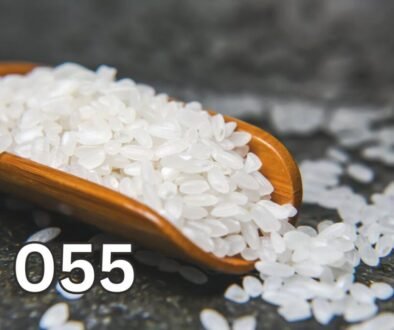Food Myths: The Truth Behind Dangerous Food Pairings
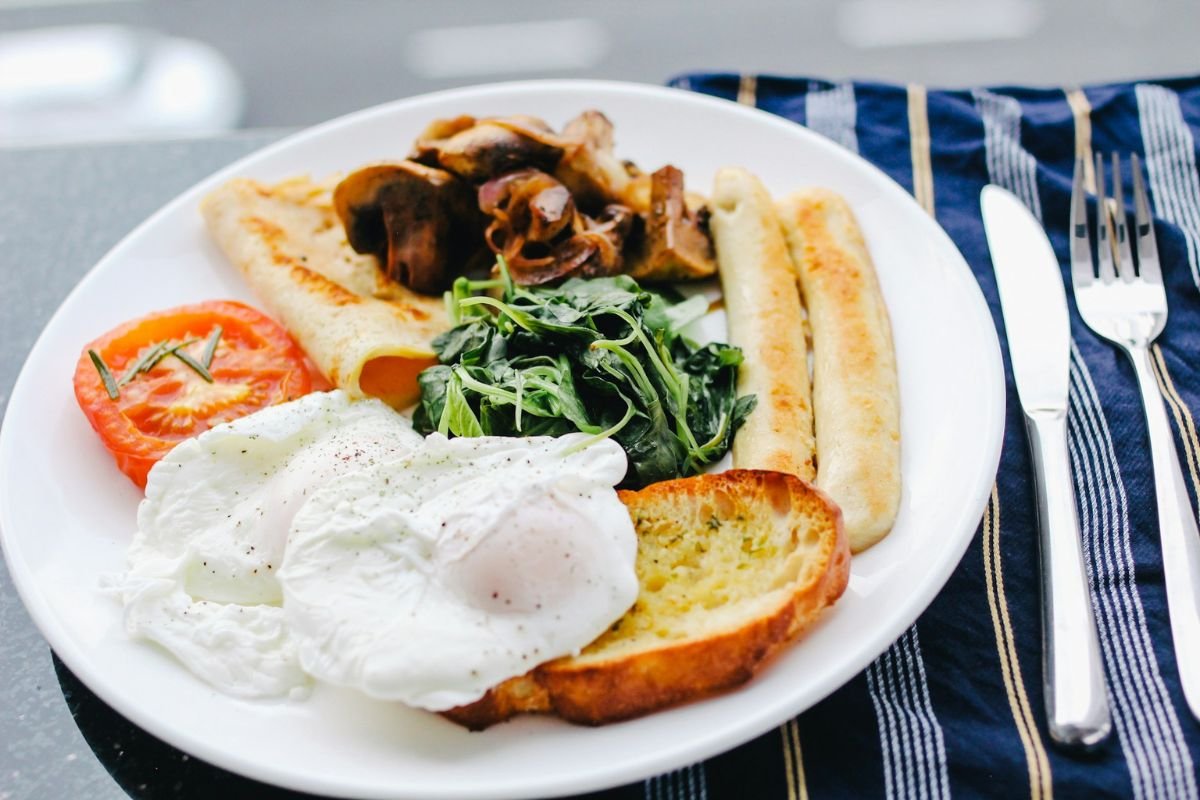
12 NOVEMBER 2024
Food pairing myths have circulated for generations, often leading people to avoid seemingly innocent combinations based on exaggerated claims. In this article, we will dissect some of the most common food pairing myths, explore the science behind them, and clarify which combinations are safe and healthy.
The Good: Food Pairing
Ever heard of “food pairing”? It’s the concept of combining foods that naturally complement each other, creating unforgettable matches. Classic pairings like wine and cheese or spaghetti and meatballs bring out the best in each component, making the experience far more exciting and satisfying than if enjoyed separately. These iconic combinations instantly come to mind when we think of certain foods, reminding us of how well they elevate each other to create a truly memorable dining experience.
The more elements involved in these combinations, the richer and more satisfying the experience becomes. Take pizza, for example: dough, ripe San Marzano tomatoes, melting mozzarella cheese, fresh basil, and a drizzle of olive oil create a universally beloved dish. Similarly, add juicy meat, crisp lettuce, tangy pickles, onions, and savoury condiments, and you have a classic burger. These iconic food pairings are enjoyed worldwide because their ingredients complement each other perfectly, enhancing both flavours and textures. The success of food pairing lies in its ability to complement each other, producing results that are universally satisfying and delicious.
The Bad: Bizarre Food Combinations
Then there are bizarre food combinations that defy logic and taste expectations. Would you dare to try spicy fried chicken coated in a rich milk chocolate sauce? How about a sweet smoked salmon cheesecake or lamb and mint-flavoured ice cream? These unusual pairings often come from bold experiments that mix entirely different kinds of dishes, merging savoury main courses with dessert-like flavours. For some, these combinations are simply too strange to imagine enjoying.
Let’s be honest, not every food combination sounds appetising, but that doesn’t mean it’s dangerous. We all have our personal tastes and preferences, and some food pairings just seem a bit odd. While some might not appeal to everyone, experimenting with flavours is usually safe.
I personally prefer to enjoy dessert separately rather than mixing sweet and savoury foods in unconventional ways. Not every food needs a companion, after all!
And the Ugly: Food Nemesis
Have you heard of a “Food Nemesis”? While the term is unofficial, it describes a real phenomenon where certain ingredients seem to be at odds with each other. When these foods are eaten together, they can trigger unpleasant or even toxic reactions in the body. Imagine experiencing severe digestive distress, no amount of willpower can overcome the effects of a true food clash! That’s why “nemesis” feels like the perfect word to describe this relationship.
In this article, we’ll uncover some widely discussed food combinations that are rumoured to be toxic enough to harm us. We’ll explore whether these warnings hold any truth or if they’re simply myths that have stuck over time.
Peach + Watermelon = Poison?
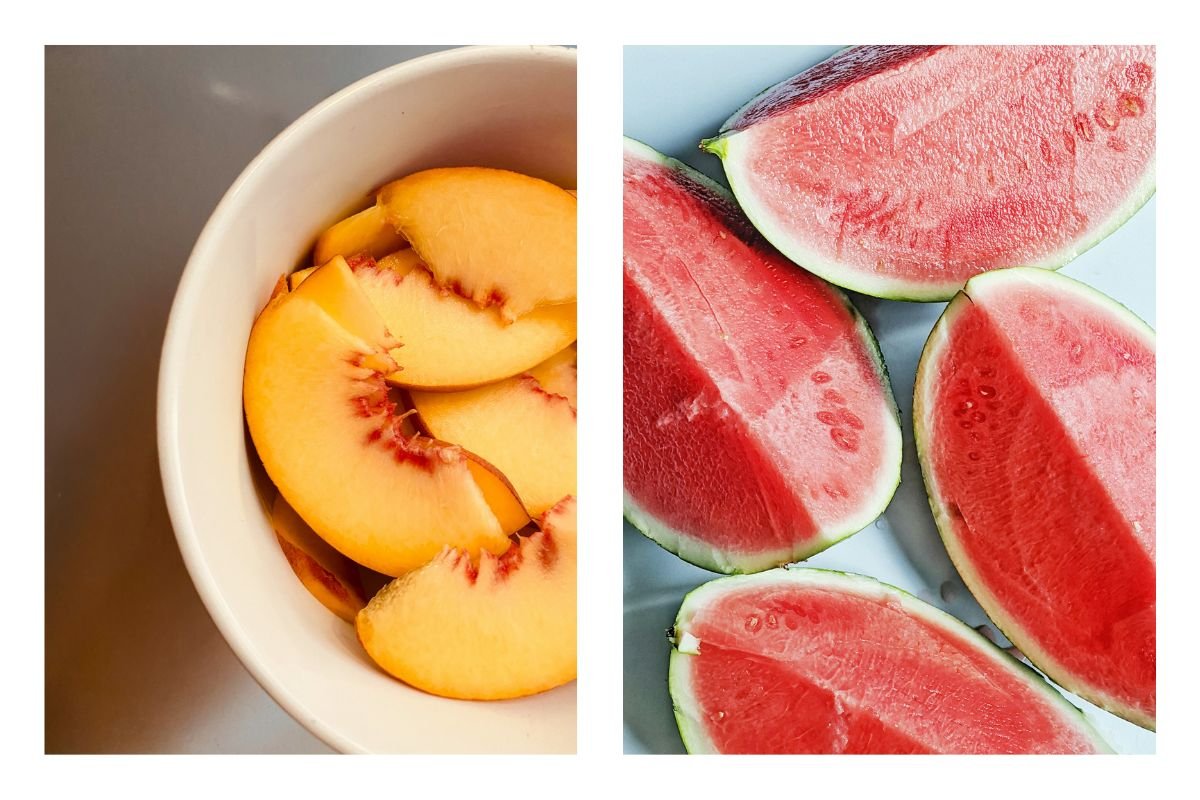
Summer brings us the sweetest and juiciest peaches and watermelons. Unfortunately, many people shy away from combining these fruits due to a persistent rumour that doing so can cause food poisoning. Despite the lack of scientific support for this idea, the belief still keeps people from enjoying this potentially refreshing pairing.
Similar Nutritional Compositions
Interestingly, the nutritional composition of peaches and watermelons is actually quite similar. Both fruits are primarily made up of water, carbohydrates, and natural sugars. Watermelon consists of around 90% water, 8% carbohydrates, and 6% sugar, while peaches are approximately 88% water, 10% carbohydrates, and 9% sugar. Given these nearly identical compositions, there is no scientific basis to support the idea that eating them together could be harmful.
Enjoying Peaches and Watermelons Together In Moderation
But it is important to note, however, that both watermelons and peaches are in high water content. Eating large amounts of water-rich foods can increase the fluid in the intestines, which may lead to loose stools or even mild diarrhoea. Additionally, very ripe fruits tend to have slightly higher concentrations of natural sugars, which can have an osmotic effect in the intestines, drawing extra water into the bowel and further contribute to digestive issues. Therefore, while it’s safe to enjoy these fruits together, eating them in moderation is the best way to prevent any potential discomfort.
Also eating too much in a short period may overwhelm the digestive system and lead to frequent visits to the toilet. The natural sugars can also be a risk for those with managing conditions like diabetes or working toward weight control. But by enjoying these fruits in moderation, you can and savour the flavours of summer without any worries.
Fruit + Shrimp = Arsenic?
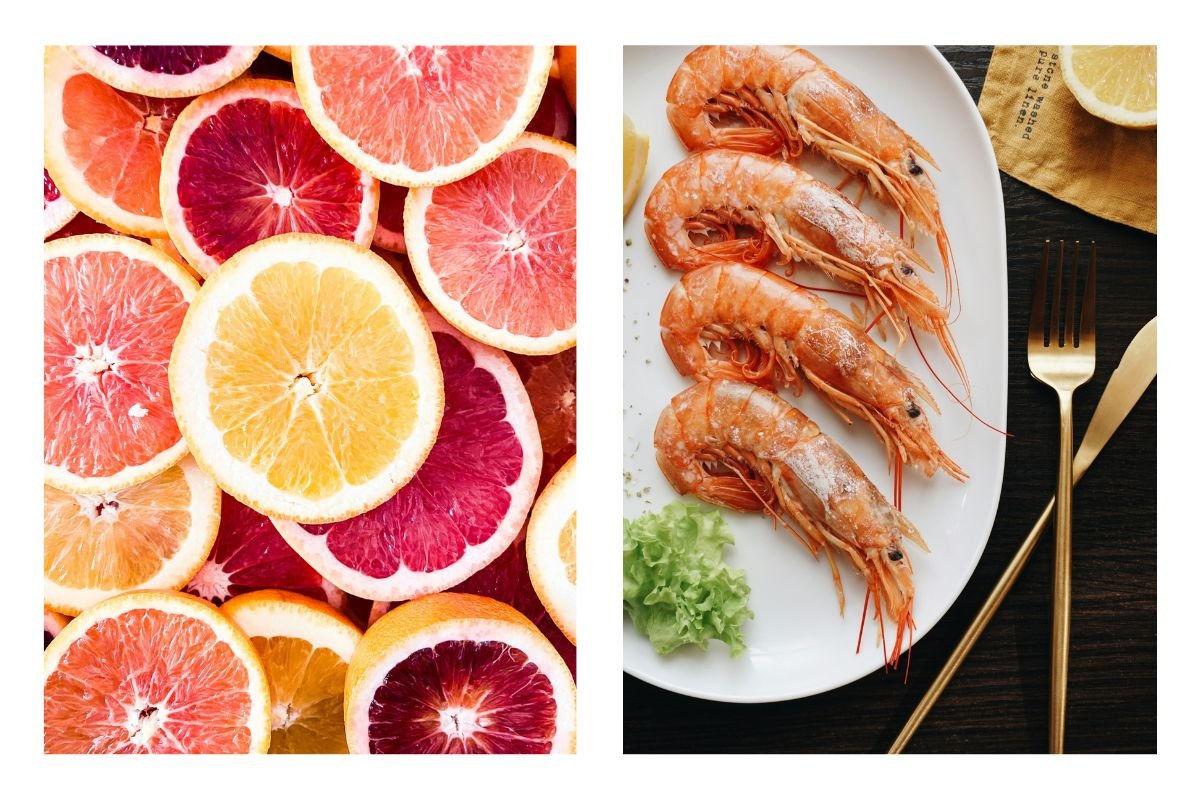
This rumour is an old classic. It claims that fruits rich in vitamin C, like oranges or grapefruits, can convert a less toxic form of arsenic naturally found in seafood, pentavalent arsenic (arsenic V), into a more toxic form, trivalent arsenic (arsenic III), which could be harmful to human health. While this might sound plausible, let’s examine the facts to see if there’s any truth behind it.
Debunking the Myth: Vitamin C and Arsenic Conversion
This claim oversimplifies complex biochemical interactions. While it’s true that vitamin C (ascorbic acid) can act as a reducing agent, theoretically capable of converting pentavalent arsenic (arsenic V) into the more toxic trivalent arsenic (arsenic III) in certain laboratory conditions, this reaction does not occur simply by eating vitamin C-rich fruits alongside seafood. To begin with arsenic compounds in seafood are primarily organic forms, which are far less toxic than inorganic arsenic. Additionally, the body’s handling of arsenic exposure involves complex detoxification processes that are not affected by vitamin C consumption.
Therefore, the claim is unfounded, vitamin C cannot convert the arsenic present in seafood into a more dangerous form.
Hypothetically Speaking
Let’s entertain this claim for a moment. Let’s imagine for a moment that this claim was true. Even then, the numbers highlight how unrealistic it is. A single kilogram of shrimp contains around 0.5 mg of total arsenic, most of which is in the non-toxic organic form known as arsenobetaine, not pentavalent arsenic (arsenic V). For arsenic to reach toxic levels in the body, you’d theoretically need to eat over 100 kilograms of shrimp in one sitting. Realistically, a person would face life-threatening consequences from extreme overeating long before arsenic poisoning could ever become a concern! And, of course, the human stomach could never hold that much food, not to mention the additional fruit required for the “reaction.”
The Verdict
In short, eating fruit and shrimp together is not toxic! Although seafood naturally contains small trace amounts of arsenic, these levels are minimal and fall well within the safety limits set by food safety regulations. So, you can enjoy your shrimp and fruit worry-free, knowing that there’s no danger in combining the two.
Spinach + Tofu = Kidney Stones?
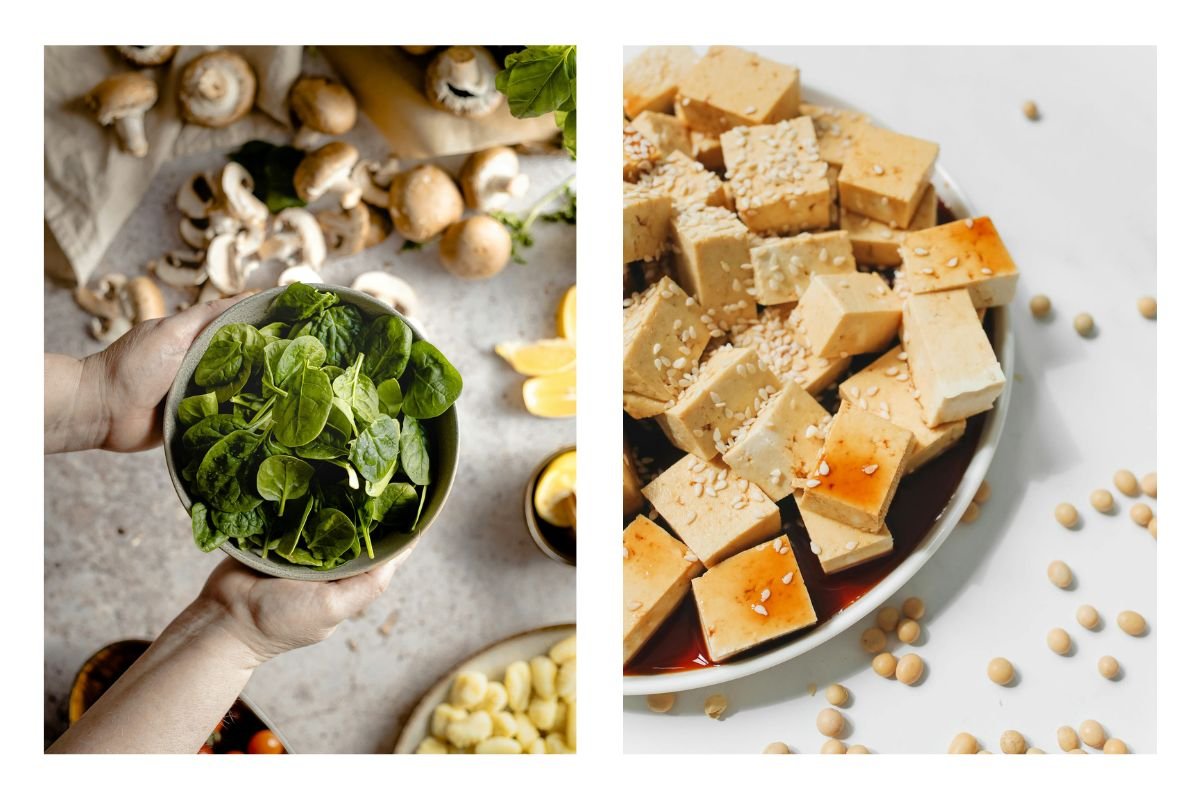
Raw spinach is rich in oxalic acid, and tofu contains a significant amount of calcium. When consumed together, oxalic acid can bind with calcium in the intestines, forming calcium oxalate, which may reduce calcium absorption. In individuals prone to kidney stones, high levels of oxalate in the urine can lead to the formation of calcium oxalate crystals, which may eventually grow into kidney stones.
So, yes, spinach and tofu can be a conflicting food combination.
A Simple Solution
For most people, eating spinach and tofu together occasionally poses minimal risk. But for those prone to kidney stones, there’s a simple solution: blanching the spinach before eating. This quick process, boiling the spinach briefly, removes a significant amount of the oxalic acid, which reduces the chance of calcium oxalate formation. As a result, this allows more calcium to be available for absorption in the intestines, potentially supporting bone health without the risk of it binding with oxalic acid.
Persimmon + Crab = Gastric Bezoars (Stomach Stones)?
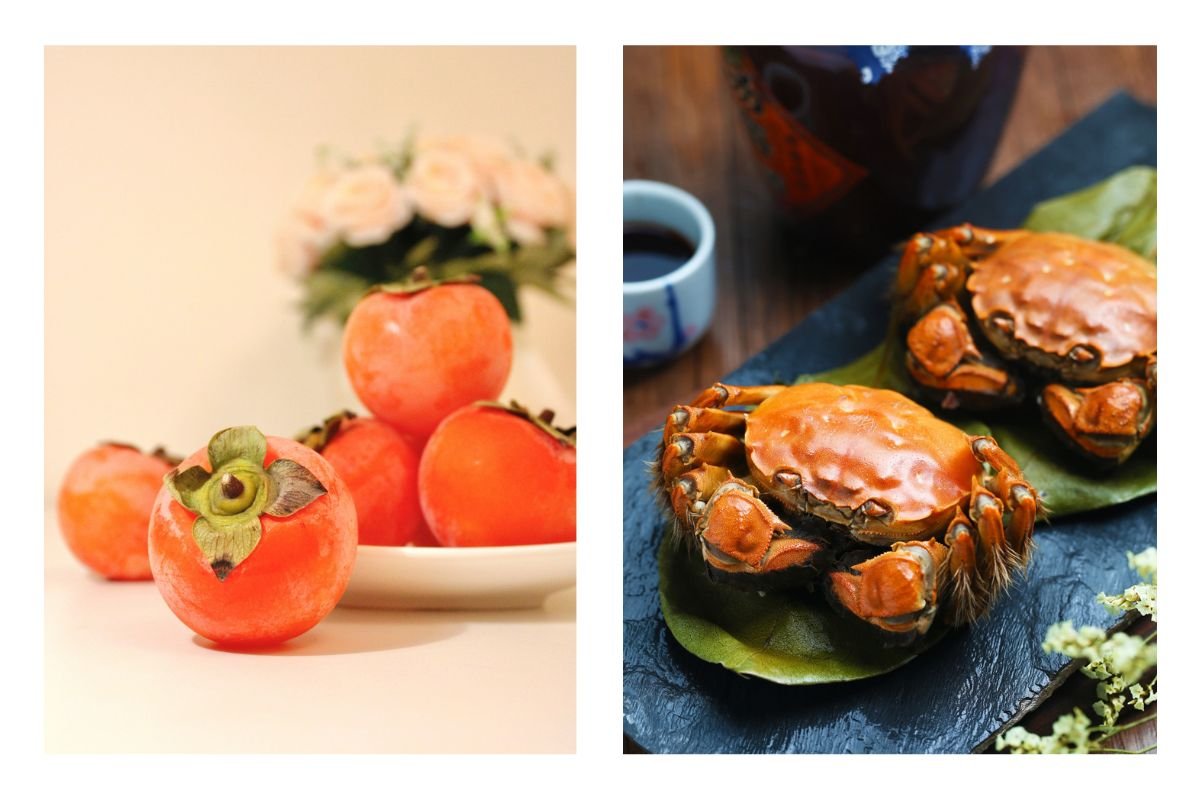
A rumour suggests that eating persimmons with crab can lead to the formation of gastric bezoars, or stomach stones. This belief is based on the idea that the tannins (tannic acid) in persimmons might react with the proteins in crab, causing a precipitation reaction that supposedly forms solid stones in the stomach. But is there any truth to this?
The short answer is no. While tannins in persimmons can interact with proteins, this doesn’t typically lead to the formation of insoluble stones in the digestive system.
Understanding Gastric Bezoars
Gastric bezoars, commonly referred to as stomach stones, are rare and generally form from the accumulation of undigested food, fibres, or other materials that clump together and harden into a mass in the stomach. This condition is usually linked to eating certain foods that are difficult to digest or not chewed thoroughly, not from specific food combinations like persimmons and crab.
The Digestibility of Persimmons
However, unripe persimmons can be difficult to digest and in rare cases, may contribute to bezoars due to their high fibre and tannin content. But as persimmons ripen, their tannin levels decrease resulting in a sweeter taste and making them much easier to digest, but consuming large amounts of ripe persimmons may, in rare cases, still contribute to the formation of stomach stones. So the risk isn’t associated with combining persimmons and crab specifically. Individuals with a history of bezoars or impaired digestion should consume persimmons cautiously. For most people, enjoying persimmons and crab together poses no risk of forming stomach stones.
Soy Milk + Eggs = Malabsorption Syndrome?
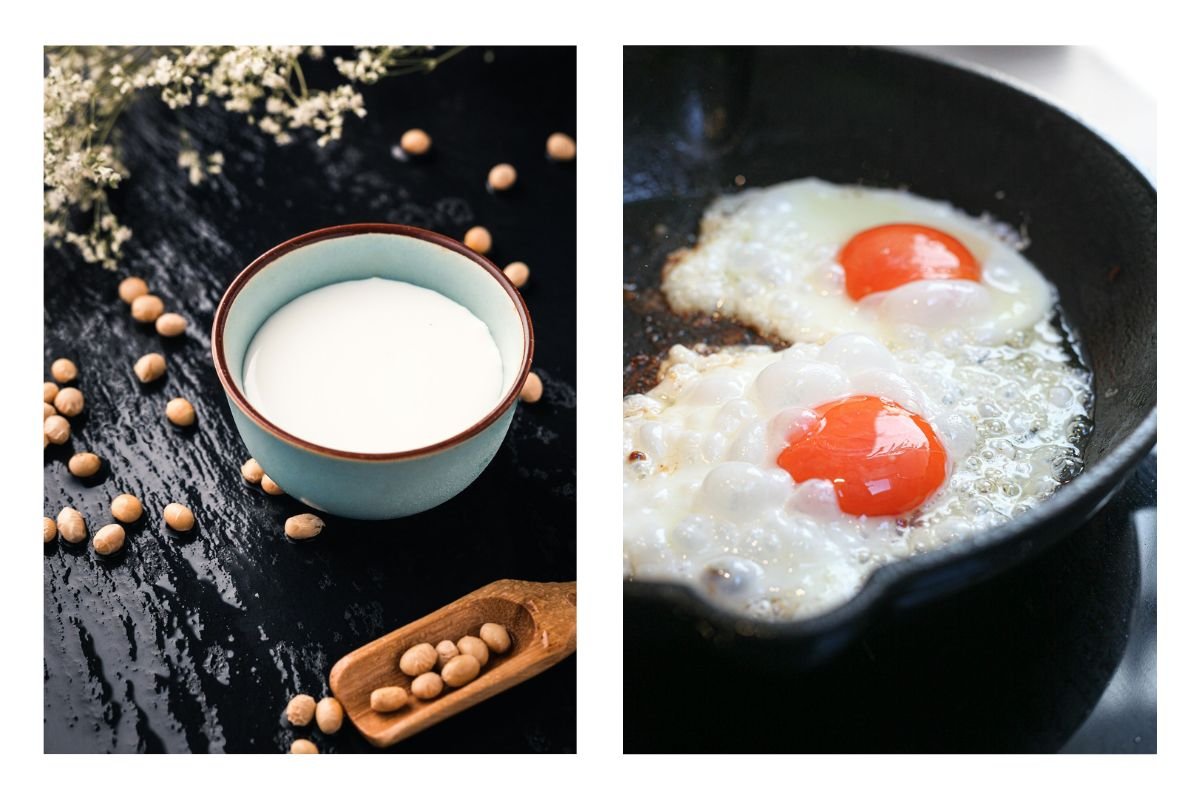
Malabsorption syndrome is a condition where the body has difficulty digesting or absorbing nutrients properly, often resulting in symptoms like bloating, diarrhoea, and, in severe cases, impacting growth and development.
A rumour suggests that consuming soy milk with eggs may hinder nutrient absorption. This popular claim warns that soy milk contains compounds that inhibit protease activity, which could prevent nutrient absorption when consumed with eggs. This has led to some people avoid pairing soy milk and eggs, especially at breakfast.
Interestingly, there’s some truth to this, but only if the soy milk is raw.
Why Raw Soy Milk Can Affect Digestion
Raw soybeans contain compounds known as trypsin inhibitor, which can interfere with the activity of protease enzymes needed for breaking down proteins into smaller peptides and amino acids for digestion. Since eggs are high in protein, their digestion relies on these enzymes. Regularly consuming raw soy milk and eggs together could disrupt this process over time, as the trypsin inhibitor blocks protein digestion, potentially leading to nutrient malabsorption.
Boiling Soy Milk
Fortunately, there’s an easy fix. If you prefer homemade soy milk to avoid additives in commercial products, simply boiling raw soy milk will deactivate the protease inhibitors, making it much easier to digest. Store-bought soy milk is typically pasteurised to neutralise these inhibitors. This means you can safely enjoy it with eggs or other protease-rich foods like papaya, pineapple, kiwi, and fermented items, without worrying about nutrient absorption issues.
Beer + Seafood = Gout?
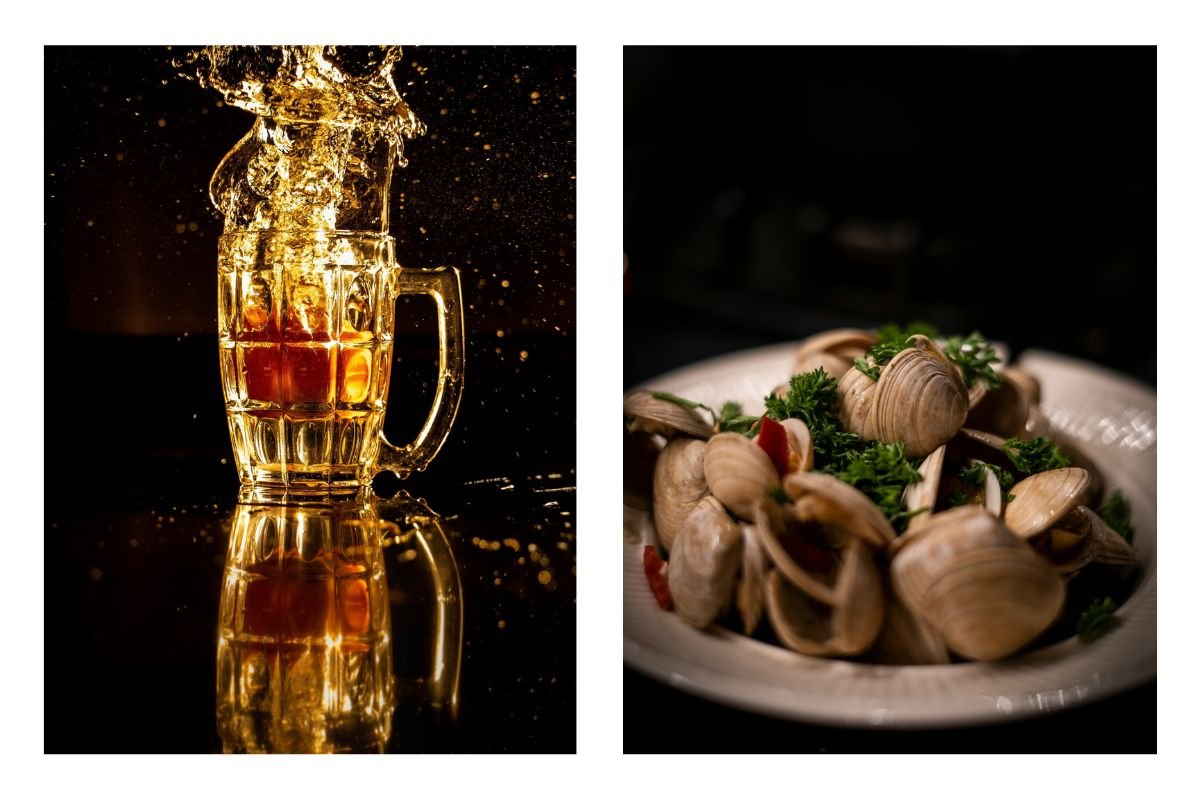
A common belief suggests that consuming beer and seafood together can trigger gout. While this isn’t entirely accurate, it’s understandable why people believe it. Let’s break down the connection.
What is Gout?
Gout is a type of inflammatory arthritis that causes sudden and severe joint pain, often affecting the base of the big toe, though it can also impact other joints, including the ankles, knees, wrists, fingers, and elbows.
What Causes Gout?
Gout develops due to high levels of uric acid in the blood, a condition known as hyperuricemia. When uric acid levels become too high, it can crystallise, depositing in the joints, tendons, and surrounding tissues. This build-up leads to sudden, severe episodes of pain, swelling, redness, and warmth in the affected areas.
What is Uric Acid?
Uric acid is a waste product formed when the body breaks down purines, compounds found naturally in the body and in certain foods. Under normal conditions, uric acid dissolves in the blood and is removed by the kidneys through urine. However, when the body produces too much uric acid or the kidneys fail to remove enough of it, hyperuricemia can develop, raising the risk of gout.
Where Do Purines Come From?
Purines are found in a variety of foods, with beer and certain types of seafood containing higher levels. When we consume these foods, the body breaks down purines, producing uric acid as a by-product. This is where the connection between beer, seafood, and gout originates, consuming high-purine foods can raise uric acid levels, potentially triggering gout attacks in those susceptible to the condition.
Clarifying the Misconceptions
For individuals vulnerable to gout, either beer or seafood alone can raise uric acid levels enough to trigger a gout episode due to their high purine content. Thus, the issue lies not in a unique reaction between these foods but in the excessive intake of purines. Essentially, it’s the overconsumption of purine-rich foods that can lead to painful gout flare-ups.
For most people without a genetic tendency toward gout or a history of the condition, occasional indulgence in beer and seafood together is unlikely to increase gout risk. This means that, for most people, enjoying these foods in moderation, even in combination, is generally harmless.
Final Thoughts on Food Pairing Myths
Certain food combinations may indeed cause unpleasant reactions in our bodies, but not to the extent of becoming toxic or poisonous. While it’s theoretically possible for two non-toxic ingredients to combine under perfect laboratory conditions to form a toxic substance, our digestive systems are not laboratories. Instead, they effectively break down foods, absorb nutrients, and remove waste. Ultimately, the foods we eat are broken down individually, making dangerous reactions between common ingredients highly unlikely.
The True Causes of Adverse Food Reactions
In truth, food poisoning or adverse reactions are more often caused by consuming contaminated or mishandled food or from individual food allergies, not from “conflicting” foods. Many myths about harmful food pairings likely arise from these real health risks rather than any danger posed by combining specific ingredients. In most cases, prioritising safe food handling and being mindful of personal allergies are the best ways to enjoy food without worry.
Prioritise Safety Over Food Pairing Myths
While it’s intriguing to learn about potential food combinations, remember that practicing proper food safety practices is the best way to prevent contamination and maintain a healthy diet. Focusing on safe preparation, clean surfaces, and proper cooking temperatures will protect you far better than worrying about “conflicting” food pairings. The best path to health starts with food safety basics!

